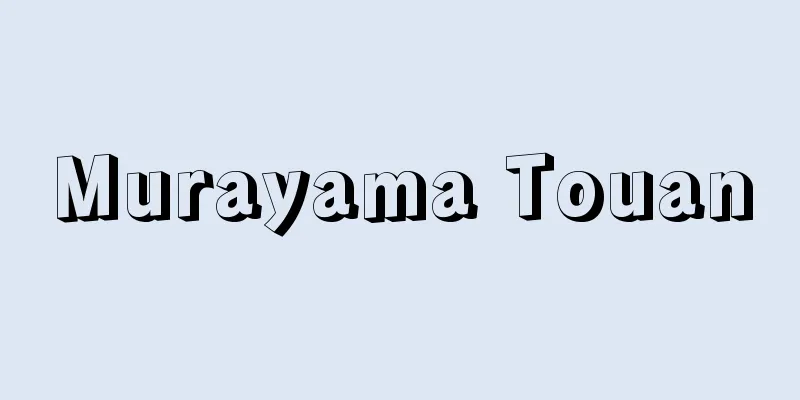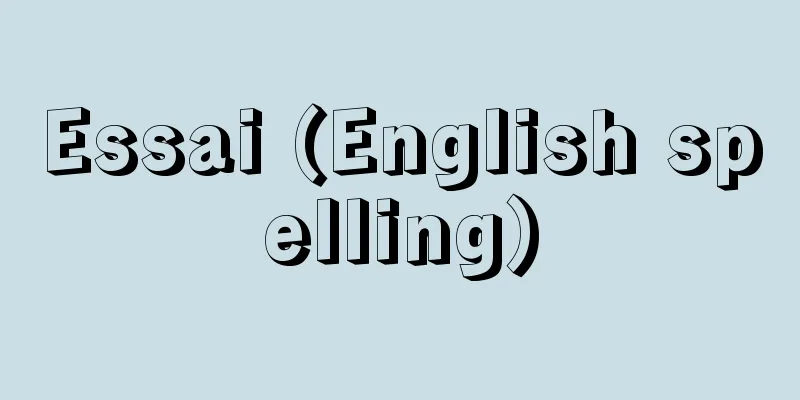Domaru - Domaru

|
A style of Japanese armor. As opposed to o-yoroi, which was developed as armor for horseback archery, this is a lightweight armor designed for standing-on-foot combat, and is thought to have been created in the middle or late Heian period. It was mainly used in the Middle Ages, but in the early period it was worn exclusively by foot soldiers standing on their feet, or by high-ranking samurai who wore it under their attire when they stepped out on the streets. It is made up of two sections in the front and three sections in the back, standing up, with four sections on the long side (kabukido), and is made round to surround the body, with a hiragana on the right side where the body is placed when wearing it. The hiragana is characterized by being layered with the back part facing up, and the kusazuri is divided into eight sections to allow for easy footwork when walking, and is usually five sections down. The upper part of the shoulders is made of long, flexible vine cotton. As a rule, helmets and sleeves are not attached, and instead of sleeves, small, palm-sized plates with a unique shape called gyoyo are attached to the shoulders to protect the shoulders. However, this style was called haramaki in olden times. This is shown in medieval records, military tales, and illustrations in picture scrolls. Later, probably during the period of change in armor from the late Middle Ages to the early modern period, confusion arose over the name, and it is thought that the name was changed to the lighter armor called domaru, which was attached to the back. After the Northern and Southern Courts period, as horseback archery battles declined and mass standing-on-foot combat became more popular, the heavy o-yoroi gradually fell out of use and became a decoration of dignity, and instead the function of the domaru, which was adapted to standing-on-foot combat, was recognized, and it became popular among high-ranking samurai, and it was equipped with a helmet and sleeves and had a similar structure to the o-yoroi. Along with the use of moriage honkozane, the production improved, and the appearance also became beautiful and added dignity, and dignified hair styles such as purple leather, black leather, smoked leather, katajiro (shoulder white), katadori (shoulder skirt), koshidori (loin skirt), and various odoshi (doroshi) were used, reflecting the tastes of the time. Lightweight suji helmets were in fashion, but full-covered suji helmets decorated with gold-plated metal fittings and with three hoe-shaped crests were especially prized. In addition to large sleeves, wide sleeves were also added, which were convenient for battling, and the kimono leaf hung down in front of the chest to cover the high cord and protect the chest and sides. On the other hand, in order to meet the increased demand caused by the intensification and expansion of wars, there was a demand to simplify and speed up production, so Iyo-zane was used, and tsutsumidou (wrapped in leather or cloth) were made, and at the end of the Muromachi period, domaru (wrapped in itazane su-gake odoshi) with board-printed plain armor, known as mogami domaru and kana domaru, appeared. Perhaps because most of the early products were crudely made, few remains remain, with only one purple leather armor believed to have been made in the Kamakura period found at Oyamazumi Shrine in Ehime Prefecture. From the Nanboku-cho period onwards, excellent examples have been handed down at Kasuga Taisha Shrine in Nara, Oyamazumi Shrine and other shrines and temples around the country, and the way armor was worn is depicted in the Tale of Heiji, Mongol Invasion, Twelve Battles, Hosokawa Sumimoto Portraits and Ogasawara Tomotsune Portraits. Domaru fell into decline during the period of armor transformation from the end of the Muromachi period to the beginning of the early modern period, but its excellent functionality and rational structure were adopted by contemporary armor, becoming its basis and exerting a major influence on early modern armor. [Motoo Yamagishi] [Reference] |Source: Shogakukan Encyclopedia Nipponica About Encyclopedia Nipponica Information | Legend |
|
日本甲冑(かっちゅう)の一様式。騎射戦用の甲冑として発達した大鎧(おおよろい)に対し、徒立(かちだち)の打物(うちもの)戦用に考案された軽便な甲冑で、平安中・後期の成立と考えられる。おもに中世に用いられたが、初期にはもっぱら徒立の下卒に着用され、あるいは上級武士が軽快に出(い)で立つときに装束の下に着籠(きご)められた。構成は、立挙(たてあげ)前二段・後三段、長側(ながかわ)(衡胴(かぶきどう))は四段で、体を囲むように丸くつくり、着用の際に体を入れる引合せは右側に設ける。引合せは後胴を上にして打ち重ねるのが特徴で、草摺(くさずり)は歩行時の足さばきを考慮して八間に割り、五段下がりを普通とする。肩上(わたがみ)は長く柔軟な蔓綿噛(つるわたがみ)である。原則として兜(かぶと)と袖(そで)は具さず、袖のかわりに杏葉(ぎょうよう)という独特の形をした掌(てのひら)大の小板を肩上につけて肩先の防護とした。ただし、この様式は古く腹巻と称した。中世の記録、軍記物語の記述および絵巻物の描写の示すところである。のちに、おそらく、中世末期から近世初頭へかけての甲冑の変革期に、名称に混乱がおこり、胴丸とよばれていた背面を引合せとするいっそう軽便な甲冑と、名称が交替したものと考えられる。 南北朝時代以降、騎射戦が衰退して集団的な徒立の打物戦が盛んになるに伴い、重厚な大鎧はしだいに廃れて威儀の装具と化し、かわって徒立戦に適応する胴丸の機能が認識され、上級武士も好んで用いるようになり、兜と袖が具されて大鎧と同様の構成を示した。盛上本小札(もりあげほんこざね)の使用と相まって製作は向上し、外容もまた美麗となって品格を添え、紫韋(がわ)、黒韋、燻(ふすべ)韋、肩白(かたじろ)、肩取(かたどり)、腰取(こしどり)、色々威(いろいろおどし)など当時の好尚を反映する威毛(おどしげ)が行われた。兜は軽快な筋(すじ)兜が流行したが、鍍金(ときん)の飾り金物で装飾し、三鍬形(みつくわがた)を打った総覆輪筋兜はとくに賞用された。袖は大袖のほか打物戦に便利な広袖も添えられ、杏葉は胸前に垂下して高紐(たかひも)を覆い胸脇を防護した。一方、戦乱の激化、拡大によって増大した需要にこたえるため、製作の簡略化や迅速化が要求されて、伊予札(いよざね)を用いることが行われ、また韋包みや布帛(ふはく)包みの包胴(つつみどう)がつくられ、さらに室町末期には最上(もがみ)胴丸、金(かな)胴丸とよばれる板札素懸威(いたざねすがけおどし)の胴丸が現れた。 初期には粗製品が多かったためか遺物は少なく、わずかに愛媛県大山祇(おおやまづみ)神社に鎌倉時代の作と推定される紫韋威の一領をみるにすぎない。南北朝時代以降は、奈良春日(かすが)大社、大山祇神社をはじめ各地の社寺に優品が伝存し、着装のようすは『平治(へいじ)物語絵詞(えことば)』『蒙古(もうこ)襲来絵詞』『十二類合戦絵詞』および「細川澄元画像」「小笠原朝経(おがさわらともつね)画像」などに描かれている。胴丸は、室町末期から近世初頭の甲冑変革期に衰退したが、優れた機能と合理的な構造は当世具足に踏襲されて、その基本となり、近世の甲冑に大きな影響を及ぼした。 [山岸素夫] [参照項目] |出典 小学館 日本大百科全書(ニッポニカ)日本大百科全書(ニッポニカ)について 情報 | 凡例 |
<<: Tomaru basket - Tomaru basket
>>: Duma - Duma (English spelling) дума/duma
Recommend
Model Laborer - ousou mohan (English spelling)
In China, the title of model worker is given to th...
Toyoda Shiro
Film director. Born in Kyoto City. After graduati...
Kobe [town] - Godo
A town in Anpachi County in the southwest of Gifu ...
Snobbism
...This kind of attitude or disposition is called...
Palm (coconut) - Palm
In the narrow sense, it refers to the coconut palm...
Cnidaria
...The name comes from the fact that the inside o...
Mitsui Zaibatsu
One of the most representative conglomerates in m...
American Fur Company
Founded in 1808 by J. Astor, it was the largest fu...
Dong Yong
He is the protagonist of a legend about a filial s...
Osaka Castle Wall Inscription
This refers to the jointly signed article by the T...
Housekeeping - Sculpin
...The educational goal through these was to teac...
Sixth Sense - Dairokkan
〘 noun 〙 A sense that perceives things intuitively...
Lady's Tale - Lady's Tale
This scroll painting was done by Gu Kaizhi of the...
Cynomys
…A herbivorous squirrel-like animal that lives in...
Florianópolis (English spelling)
The capital of the state of Santa Catarina in sout...









